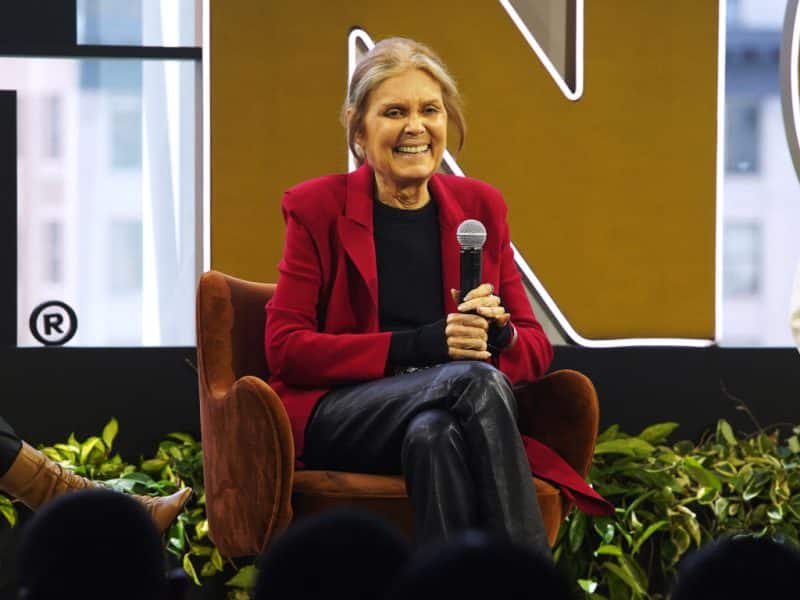
(WOMENSENEWS)— My husband and I bought our splendid, simple, decaying, 1876 Victorian 45 years ago.
The first weekend, while our 3-year-old son ran happily from room to room, we managed to strip three rooms of their dated wallpaper, preparing to paint with rich castle colors: apricot, Chinese red, garnet.
We’ve been renovating and improving and falling ever more in love with that house ever since. Despite having one or another absorbing career, over the years I must have touched and worked on every inch of this distinguished space above the basement and below the attic. Recently I mixed the colors and painted the walls and woodwork of my study. I’ve painted every room, except for three closets which I keep promising to get to.
Actually, I so adore my aging Victorian, as does my husband, that we think we’ll never want to move.
We’re old enough now to be anticipating that the house will need changes to adapt it to our being older and perhaps less mobile here. Aging-in-place, as it’s called, will require us to add a bathroom downstairs where a pantry exists. I am arranging that: I put a tall 1895 cabinet with opaque rippled leaded-glass doors in the center hallway, and emptied the pantry by moving all the dishes and glasses onto its broad deep cherry shelves.
An architect came to suggest how he would rearrange the pantry space to make room for a shower. We’re told most Americans want to stay in their homes and die in their beds. I certainly have fit that profile…
Or did so, until my college friend Anne gave a talk about her big move to a Continuing Care Retirement Community, or CCRC.
Surprisingly Intrigued
It’s still amazing to me that I was so intrigued by her narrative. I suppose it’s the power of life storytelling. Her husband’s ill health had forced the two of them to move out of their house in the winter, when he couldn’t make it up the steep snowy hill from the garage. She was only 71 and healthy, but finding a new domestic setting was necessary.
It turned out to be the right move for her too. She told a moving account of her transition from being a single caregiver in a big echoing house to becoming a member of a vibrant and sociable community. It offered caregiving support to her husband while encouraging her to pursue her own interests, including exercising, reviewing articles for scholarly journals and singing.
Anne told this story not just as a wife, but as a gerontologist, at a Gerontological Society of America conference.
That part was fascinating too. When she suddenly found herself surrounded by elderly residents, some on walkers or in wheelchairs, she found she had her own ageism and ableism to overcome.
She did. The people on walkers or in wheelchairs turned out to be amusing or interesting lunch companions. A 90-year-old beat her at swimming laps in a competition.
She started to sing with a chorus. She made friends with a woman whose cancer was terminal. Little by little she lost her fear that old age would be a horrifying stage of life, shared with incompetent dodderers from whom she would shrink. It was just life. She joined in with a will. It’s a lesson to everyone, since we are all ageist to some degree, from childhood on.
‘Must Be a Book’
At the conference I stood up and said enthusiastically, “This must be a book.” It would bring the intimate, persuasive voice of a gerontologist to life, writing about later life and caregiving. Gerontologists, you may not know, are mostly younger-than-old, often far younger than the people they write about. The book would inform people about CCRCs, which is an unknown acronym. Being well cared for in your own new home until you die—it seems a dream. The book would humanize disabled older people.
And so I helped the group find a publisher, and then I wrote the Afterword (and annotated a list of “care-home” novels, from fiction about the “tragically ailing” to the late-life romcoms where people find love in the retirement community and the nursing home). I chose the title, “The Big Move.”
That’s a lot for a woman who loves her Victorian to do.
So, what will my husband David and I decide in the future? We still don’t know, of course. People can’t anticipate what will happen or what they will feel they need. And what they can afford. The CCRCs may become less expensive, if demand is high enough to produce competition, but at the moment they cost the earth.
I think I overcame my own ageism long ago, when my mother was living in one of those vast Florida condos where everyone is over 55. Eventually I got to know well the “old people” who were her friends, since she lived there until she was 91. In short, David and I have another option as a result of reading Anne’s story and taking it to heart. And choosing is what it’s all about, isn’t it, at any age?


